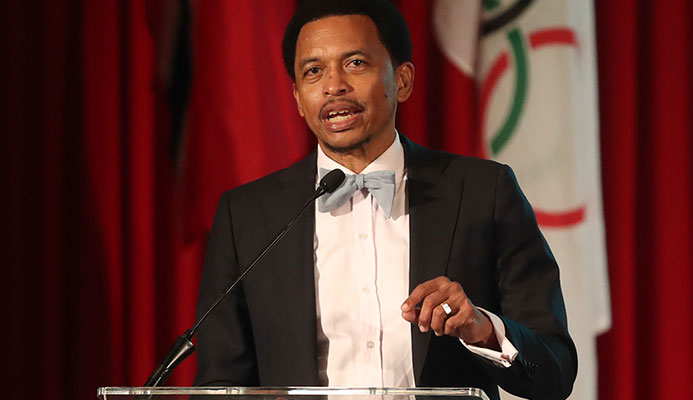THE CALL by president of the Trinidad and Tobago Olympic Committee Brian Lewis for greater attention to be paid protecting children from abuse during sporting activity is one which all must heed.
The issue has not been a prominent one, but that is part of the problem. Traditionally, much focus has been given to issues such as doping and game-fixing. But the threat posed by child abuse endangers not only the welfare of minors but also the reputation of sport generally.
Just last year, Bermuda soccer coach Andrew Bascome and his brother said they were victims of sexual abuse in the 1980s. Bascome called for tougher security and vetting for those linked to youth sports to help to minimise the risk of sexual abuse.
And in a case closer to home, former national runner Ato Stephens has been arrested and charged for sex offences against a female teen whom he was coaching in the Cayman Islands. Stephens has admitted to sending inappropriate messages to the teen but denies touching her or threatening to expel her from the track team.
These cases are likely to be the tip of the iceberg.
The sporting arena is fraught with risks when it comes to child abuse. In the first instance, children are often left in the care of adults for long periods of training.
There is also an imbalance of power: children may depend on coaching officials to advance in a given field of play.
And as Lewis noted last week, abuse takes many forms. It can involve sexual, mental, emotional and physical bullying. It can involve exploitation by persons holding power and it can also occur among young sports women and men.
We agree with Lewis’ call for a stipulation linking of sporting activities and organisations with universal guidelines of good governance, financial integrity and gender diversity. These guidelines should have tighter vetting requirements for personnel and also careful procedures in place to facilitate reporting of instances of abuse.
Of course child abuse is a matter with which we should be concerned nationally, not just in the sport arena. But agencies such as the Children’s Authority and the various NGOs that specialise in child welfare cannot be expected to bear the brunt of responsibility.
The deeper issue is a need for a more candid society in which all persons and communities are aware of what is required.
We must seek to avoid the situation that has often unfolded abroad in which victims of abuse are then denigrated. As noted by Lewis, sporting associations and institutions must be proactive in making it easier for victims to come forward and report issues of abuse.
“There needs to be checks and balances, look at what happened in England, look at what happened in the US,” Lewis said. “It would be naive to think there are issues that are not swept under the carpet. There is always the potential where the welfare of the child or the youth is not as important as the reputation or image of the institution.” Though individual associations must take steps to ensure they are implementing best practices, it is important for there to be consistent, national standards. There must be a universal movement by major sporting bodies. Such a movement is more likely to be effective in stamping out abuse or creating an environment where abusers do not feel comfortable in taking advantage of youths they are in charge of.
What is not needed is ignorance and denial. Just because we have not seen our own Jerry Sandusky or Bob Higgins emerge does not mean we must be complacent.
There are clear vulnerabilities.
We must do what we can to tackle the issue upfront

